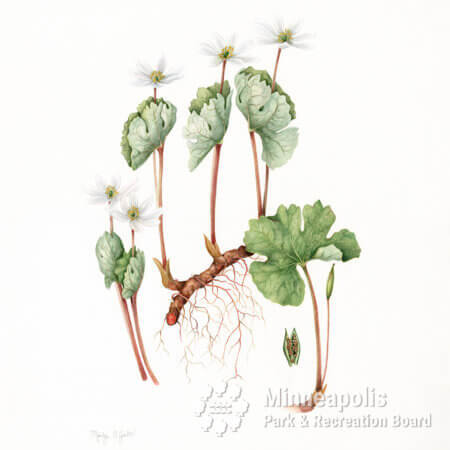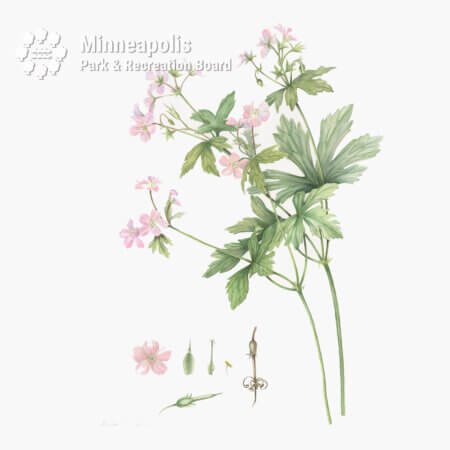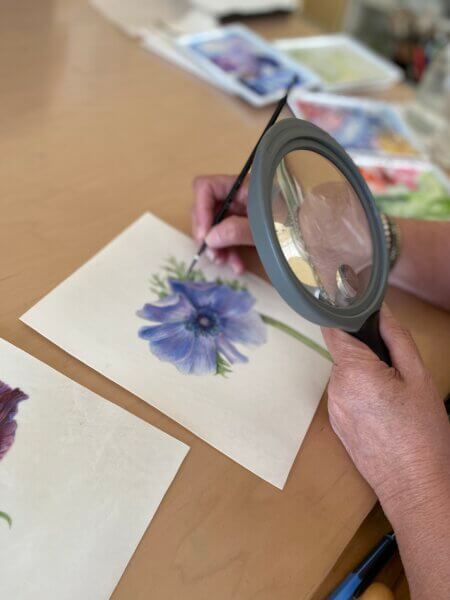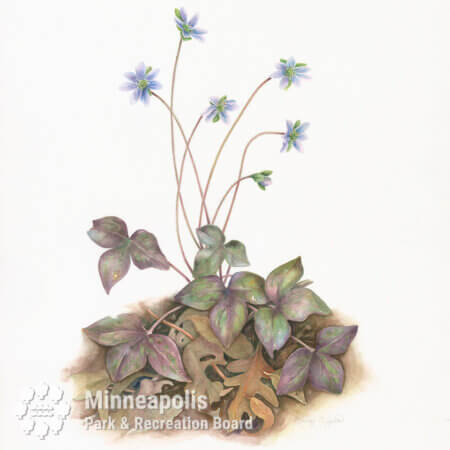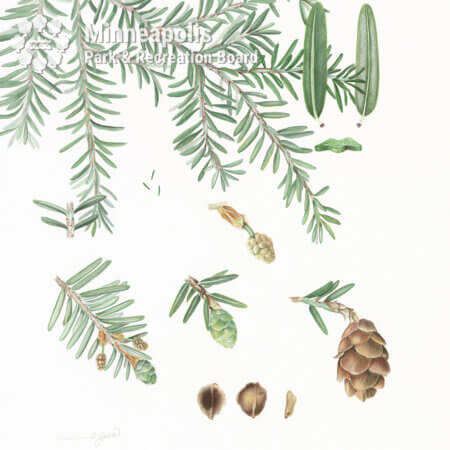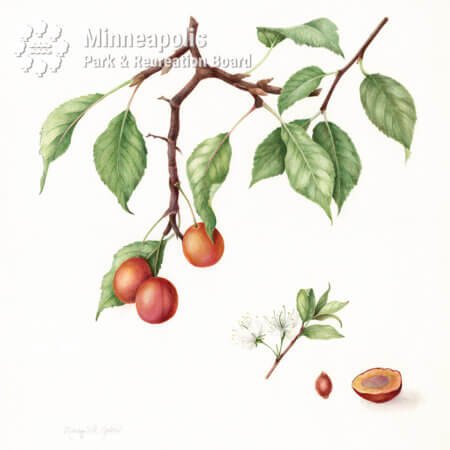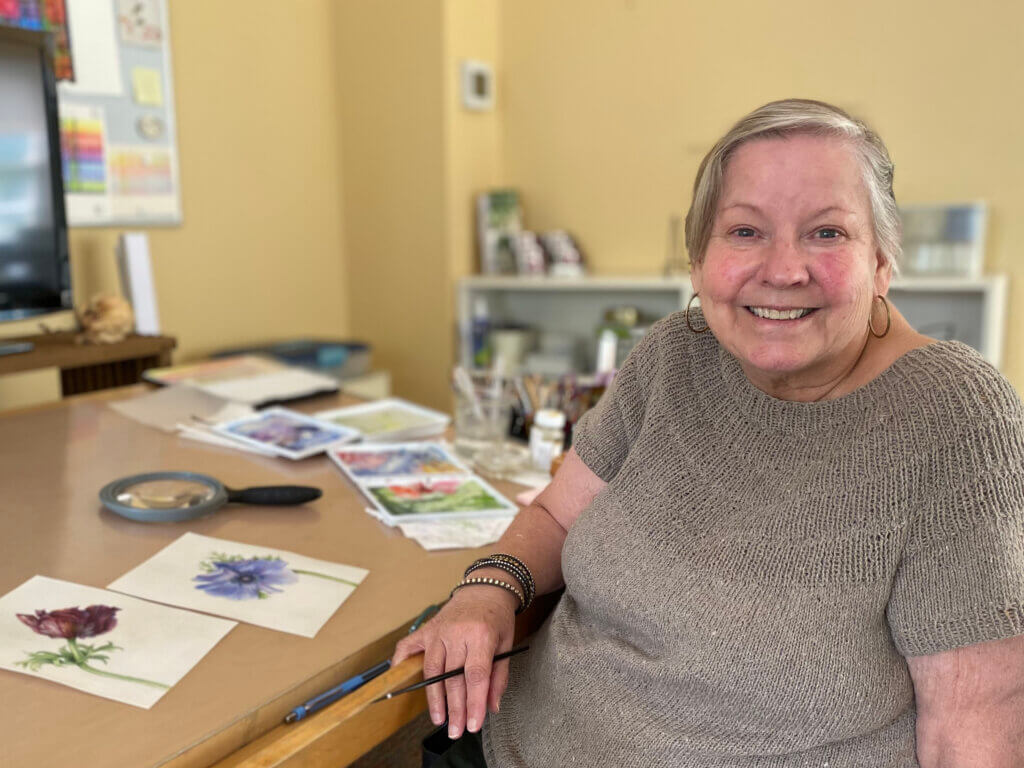
Marilyn Garber
Excerpt from a conversation conducted on August 18, 2023 by Angela Salisbury, Archivist & Records Specialist, at Longfellow House in Minnehaha Regional Park. The interview was done for the MPRB 140th anniversary celebration, Our Parks, Our Stories.
Marilyn Garber is an artist and educator with a unique connection to Minneapolis gardens. The founder of the Minnesota School of Botanical Art (2001), Marilyn’s studio and classrooms are in the historic Longfellow House, which makes a perfect art space because of its abundance of natural light.
In 2010, Marilyn noticed that her students were becoming exceedingly proficient and needed a project, something more advanced and more difficult that they could work on independently. She decided it was time to create a florilegium, a collection of illustrations which document living plants in a specific location. She settled on the Eloise Butler Wildflower Garden and Bird Sanctuary as her muse, and since then, 113 illustrations have been completed and added to the florilegium collection, housed with the Minneapolis Park & Recreation Board.
For the 140th anniversary of the Park Board, Marilyn shares her stories.
“I started looking at where we should do a florilegium. Should we work with the Rose Garden which is part of the Minneapolis parks, or what should we do? But I’ve always had fondness for native plants, and Eloise had such a wonderful story to tell. Because it was the first public wildflower garden in the United States, it’s significant. That garden is a little gem with a fascinating history.
The florilegium is a mix of prairie, wetland, and forest plants. We wanted to document the plants that were important to Eloise as well as what is currently growing at the Eloise Butler Wildflower Garden.
It’s a rule we can’t take anything out of the garden. I don’t know of another florilegium that works that way, but we have worked it out. When we adopt the plant that we want to paint, we read all the botanical history on it. When the plant is in bloom, we’re there photographing and sketching it. Sometimes a plant is only in bloom for three days, and then it’s over. That’s really hard to catch. So staff in the garden might give us call and say “It’s in bloom today, come out!” And we go out.
Often when I’ve been working on a piece, I almost feel like Eloise is sitting on my shoulder encouraging or maybe telling me I need to work harder. That’s mostly what I hear. ‘You’re not giving this enough attention. Look at that detail.’ To tell her story as a woman in her time and what she was able to accomplish, I think is just fascinating. I would have loved to have met her. I feel like we’ve really accomplished something. We’ve done a major work, and I’m so happy that it’s Eloise’s garden.”








